
|
Volume 16, Issue 41 - October 9 - October 15, 2008
|
|
Columns |
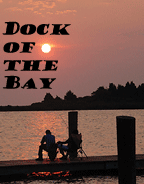
For Voters, Oct. 14 Comes Before Nov. 4 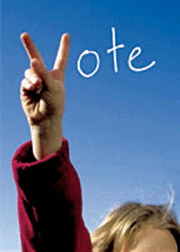
You’ve got until October 14 to make history. Barack Obama will be the first African American president … or Sarah Palin will be the first female vice president. One way or the other, history’s ours for the making. But you only get that history-making vote if you’re registered.
A month from this year’s November 4 Election Day, 3.3 million of us Marylanders are registered to make history. Two hundred nineteen thousand of us registered in 2008, raising our voter count by 6.6 percent.
Get your ticket to history at www.elections.state.md.us (800-222-8683). The State Board of Elections (http://www.elections.state.md.us/about/directions.html) and Local Board of Elections (http://www.elections.state.md.us/about/county_boards.html) stay open until 9pm on October 14 to receive your registration. By mail, it must be postmarked by October 14.
Eat State Champion Apples While You Can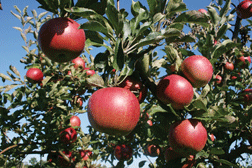
October is also the last month most of our farmers’ markets will be open, meaning that we’ll soon be searching harder for locally grown fruits and vegetables — or feeling the pain of withdrawal after we’ve become addicted to their incomparable taste.
For the next several weeks, you’ll find apples, broccoli, beans, Asian pears, eggplant, peppers, pumpkins and squash at the October markets at Anne Arundel County (Riva Road at Truman Parkway) Deale, North Beach, Piney Orchard, Severna Park and Westfield Mall.
At two markets, you can taste Maryland’s state-wide winner of the 2008 Apple, Peach and Pear Championships at the Maryland State Fair: Harris Orchard of Lothian/Jug Bay. Harris Orchard is regular at the North Beach Friday Night Farmers’ Market and the Saturday morning Anne Arundel County Farmers’ Market at Riva Road and Truman Parkway.
“Fruit is our passion,” says Peggy Campanella, who has operated the orchard with partner Bill Harris since 1989. “We take great pride in bringing the best we can grow to the public at a fair price.”
This is the 12th year in a row the 50-acres Southern Anne Arundel County orchard has been Maryland state fruit champion.
After October 31, the Anne Arundel County Farmers’ Market at Riva Road stands alone. Local produce and products stay on sale there through December 30. Plan to shop there — unless you can convince your local market manager to extend the season to bring you the delicious cool-weather crops of autumn.
Find more places to shop locally at Southern Maryland Agricultural Development Commission’s So Maryland So Good Farm Guide: www.somarylandsogood.com.
Oktoberfest: Party Like It’s 1810
Pumpkins in our region don’t usually see frost so early in October, but a sure sign that fall has arrived in Bay Country is the proliferation of Oktoberfest celebrations.
The first Oktoberfest was held in Munich, Germany on October 17, 1810, to commemorate the marriage of Crown Prince Ludwig to Princess Therese of Bavaria. Held in an open field, the public party featured a horse race and libations.
For eight years, the royal anniversary was celebrated with the horse race. In 1819, the race was called off, but the party just got bigger, officially extended to 16 days of revelry and heavy drinking.
Today, Oktoberfest is one of Germany’s greatest tourist attractions as close to a million people descend on Munich to consume 10 million pints of beer and 800,000 wursts and sausages.
And the party keeps getting bigger. As German immigrants arrived in North America, Oktoberfest sprouted up in their new communities.
In 1976, Ohio jumped on the oompa-band wagon with Oktoberfest-Zinzinnati USA. The event has grown into North America’s largest Oktoberfest. More than 500,000 people gather on Cincinnati streets to eat bratwurst, sauerkraut and swig thousands of gallons of beer.
Ah yes. The beer. Oktoberfest is more than an event. It is also a style of beer. The traditional Oktoberfest beer is brewed very much like the reddish-amber Marzen beer that was served at the Crown Prince’s wedding in 1810. Modern German Oktoberfest beers tend to be lighter in color and body than the traditional Marzen style.
American breweries didn’t want to be left out of the party. Across the country, brewers concoct their special brew. Similar to the traditional German Oktoberfest beer, domestic versions are often slightly higher in alcohol, richer in hops, aroma and flavor and redder in hue than the European forebear.
No matter which brew you prefer, after several frosty mugs you may find yourself donning lederhausen and looking for a polka partner.
All wedding anniversaries should be such fun.
Find Oktoberfests in 8 Days a Week.
–Margaret Tearman
Annapolis Summer Garden Theatre’s fall Schedule: Stage/2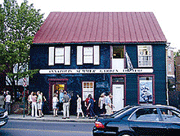
Annapolis’ theater under the stars continues its quest to raise money to raise scaffolding. Annapolis Summer Garden Theatre hopes to finalize its Stage/2 renovation plans by mid-month. Phase one will restore the historic building’s exterior, from brushing up brickwork to restoring windows.
So far, the theater has raised $50,000 from the state, gotten a promise of $100,000 from Annapolis and received nearly $4,000 in patron donations.
That still leaves them $46,000 short of their estimated costs.
“Before we can start any work, we have a lot of paperwork to do,” Summer Garden’s president Carolyn Kirby, told Bay Weekly. “Once that work begins, we will need to raise a lot more. We think that it will be easier to raise funds if people see progress.”
Stage/2 project manager Don Ferris is finalizing restoration plans with architects, keeping the building’s history in mind.
“We have not yet selected any vendors,” says Ferris. “This will be careful screening because of the old brick that requires restoring.”
Construction will begin before the next season, loosely slated between November and late May.
–Diana Beechener
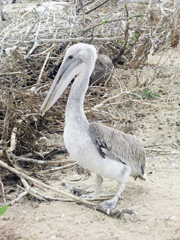
This Week’s Creature Feature …
Comes to us from Chesapeake Bay, where those big birds fishing alongside you are indeed pelicans. Used to be, you had to go oceanside to see pelicans, but in the late 1980s, we started seeing the occasional big brown bird on the Bay. Maryland Department of Natural Resources biologist Dave Brinker discovered Maryland’s first-ever recorded nesting pair of brown pelicans in 1987.
Every summer since, Brinker has led teams of biologists and volunteers to band 95 percent (more than 18,000) of the pelican chicks raised in the Bay’s isolated islands. From just five known nesting pairs in 1987, the number of brown pelican pairs in Maryland’s portion of the Chesapeake Bay grew to 141 in 1999.
This year, when we’ve seen them off the Calvert coastline, 1,042 pairs nest along the Chesapeake.
“Pelicans are relatively new to the Bay ecosystem, and not something that Captain John Smith would have seen during his historic explorations,” Brinker says. “Climate change — warmer weather and milder, shorter winters — may be encouraging pelicans to expand their northernmost Atlantic Coast habitat into Chesapeake Bay.”